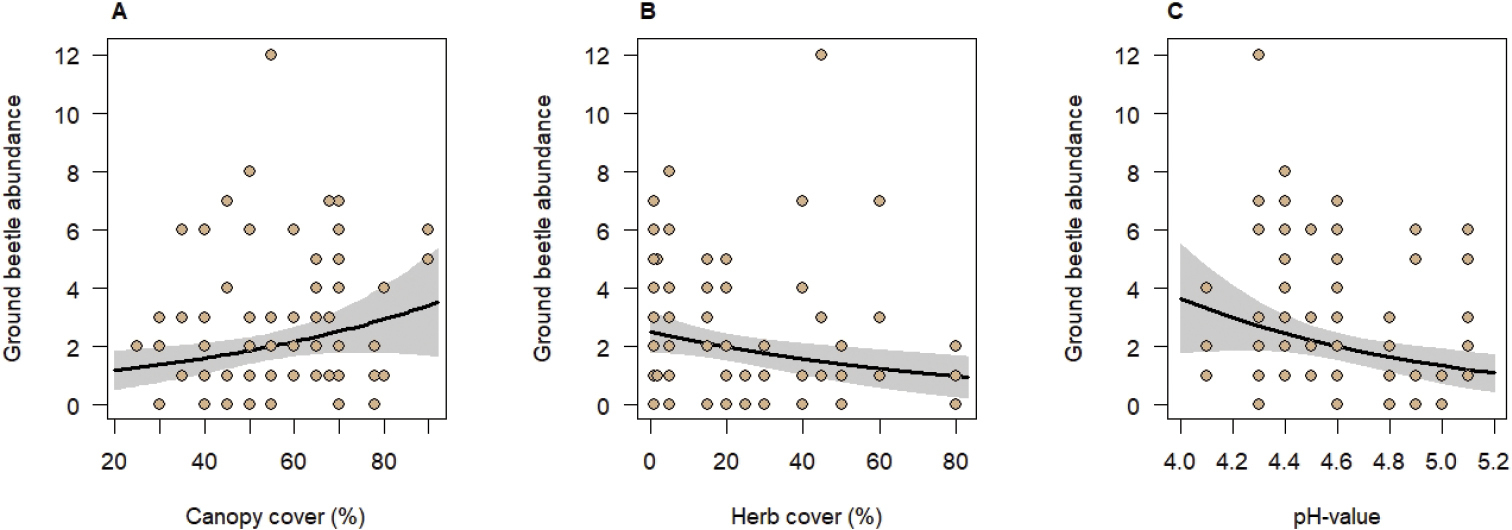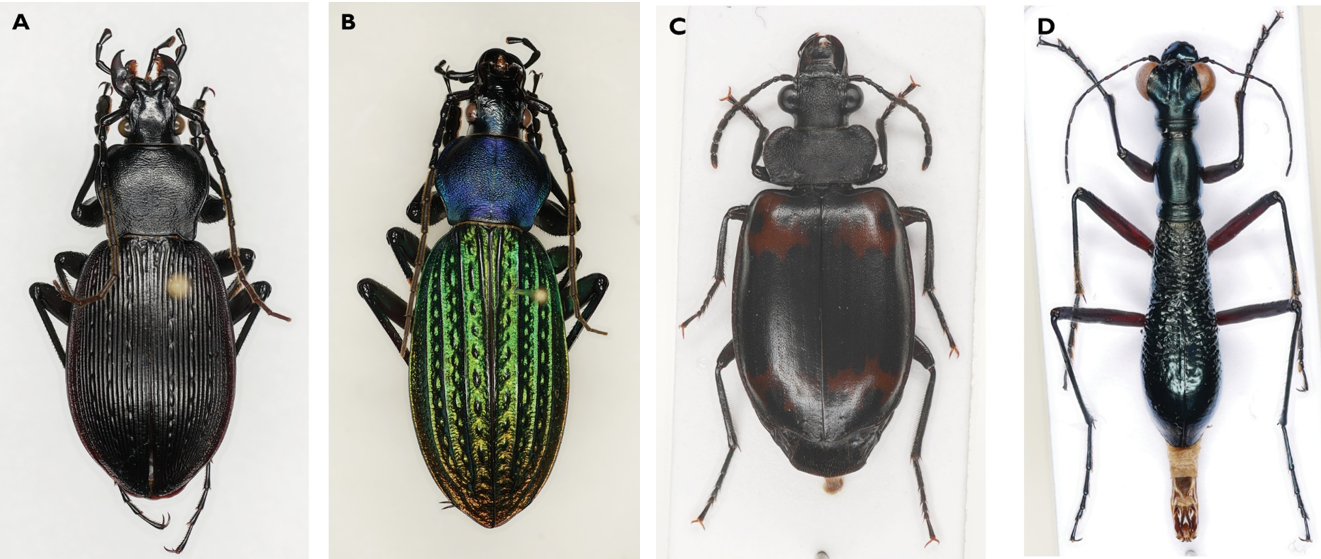As woody plants provide much of the trophic basis for food webs in forests their species richness, but also stand age and numerous further variables such as vegetation structure, soil properties and elevation can shape assemblages of ground beetles (Coleoptera: Carabidae). However, the combined impact of these numerous variables on ground beetle diversity and community structure has rarely been studied simultaneously. Therefore, ground beetles were studied in 27 plots in a highly diverse and structurally heterogeneous subtropical forest ecosystem, the Gutianshan National Park (southeast China) using pitfall traps and flight interception traps. Both trapping methods collected partly overlapping species spectra. The arboreal fauna was dominated by lebiines and to a smaller extent by tiger beetles and platynines; the epigeic fauna comprised mostly representatives of the genus Carabus and numerous tribes, especially anisodactylines, pterostichines, and sphodrines. Ground beetle species richness, abundance, and biomass of the pitfall trap catches were analyzed with generalized linear mixed models (GLMMs), fitted with seven environmental variables. Four of these variables influenced the ground beetle assemblages: Canopy cover, herb cover, pHvalue of the topsoil and elevation. Contrary to our expectations, woody plant species richness and stand age did not significantly affect ground beetle assemblages. Thus, ground beetles seem to respond differently to environmental variables than ants and spiders, two other predominantly predatory arthropod groups that were studied on the same plots in our study area and which showed distinct relationships with woody plant richness. Our results highlight the need to study a wider range of taxa to achieve a better understanding of how environmental changes affect species assemblages and their functioning in forest ecosystems.

Figure 2: Relationships between ground beetle abundance and canopy cover (A), herb cover (B) and pH-value of the soil (C). Black lines indicate significant relationships at p < 0.05 obtained from mixed-effects models (keeping other significant predictors fixed at their means) with grey areas indicating the 95% confidence intervals. Points represent observed values per trap. Note that some traps had similar abundance and predictor values. The fixed-effects explained 22% of the variation in ground beetle abundance.
Literature:
Pascale Zumstein*, Helge Bruelheide, Andreas Fichtner, Andreas Schuldt, Michael Staab, Werner Hardtle, Hongzhang Zhou, and Thorsten Assmann. 2021. What shapes ground beetle assemblages in a tree species-rich subtropical forest? Zookeys. 1044: 907-927. https://doi.org/10.3897/zookeys.1044.63803.

